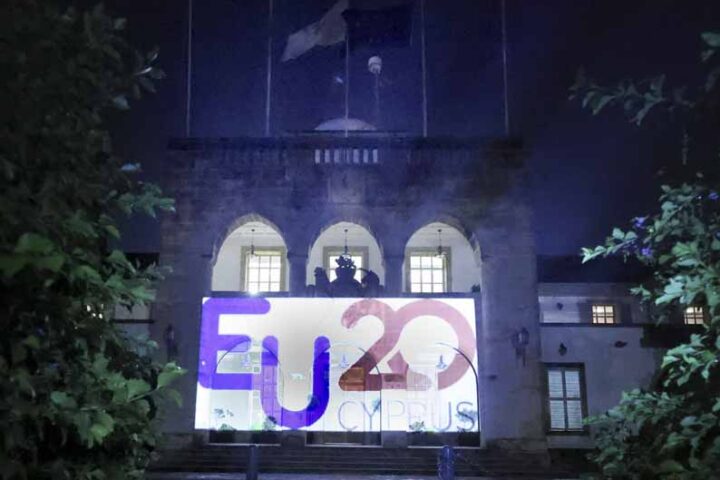The European Commission adopted today a Green Paper, entitled “Towards a Europe free from tobacco smoke: policy options at EU level”, to launch a broad public consultation on the best way to promote smoke-free environments in the European Union. The Green Paper examines the health and economic burdens associated with passive smoking, public support for smoking bans, and the measures taken so far at national and EU level. Views are sought on the scope of measures to tackle passive smoking. The advantages and disadvantages of measures of different scope are analysed, including a total ban on smoking in all enclosed public places and exemptions of different types (e.g. for restaurants and bars). The Commission considers that the policy of widest scope would bring the biggest health benefit to the public health of the population. Finally, the Commission seeks views on which policy option would be most appropriate to achieve smoke-free environments: no change from the status quo, voluntary measures, coordination and exchange of best practices between Member States, a Commission or Council Recommendation or binding EU legislation. The other EU institutions, Member States and civil society are invited to submit their comments to the Green Paper until 1 May 2007. The Commission will then analyse the responses and produce a report with the main findings of the consultation, before considering further steps.
Commissioner for Health Markos Kyprianou said: “Passive smoking kills more than 79,000 adults each year in the EU. The evidence from European countries with comprehensive smoke-free policies is that they work, produce results and are popular. A Eurobarometer survey found more than 80% of EU citizens in favour of a ban on smoking in workplaces and indoor public places. The question is, how can we build on the trend towards smoke-free environments in Member States, and what should be the extent of the EU’s involvement?”
Passive smoking remains a widespread cause of preventable death and disease in the EU. Chronic exposure to second hand smoke increases the risk of lung cancer in non-smokers by 20-30% and of heart disease by 25-30%.Policy options
The five options presented for discussion in the Green Paper are:
No change from the status quo: while the current trend towards smoke-free environments in the Member States would probably continue, progress would be patchy and this could be expected to be the least effective policy option.
Voluntary measures: while self-regulation at European level might be quicker and more flexible, the evidence from Member States suggests that voluntary agreements in this area have not been effective.
Open method of coordination: seeking convergence in national smoke-free legislation through guidelines, targets and exchanges of best practice is another possibility, but its effectiveness would depend on peer pressure
Commission or Council Recommendation: such a recommendation would not have binding force but would place the issue on the political agenda. Its effectiveness would depend on monitoring requirements and some Member States might choose not to act at all.
Binding legislation: this could be achieved in different ways and would impose a comparable, transparent and enforceable level of protection against environmental tobacco smoke across the EU. However, this route is likely to be relatively lengthy with an end result which is difficult to predict.
In terms of scope, the Commission’s Green Paper concludes that a comprehensive smoke-free policy would bring the greatest health benefit to the population, and the evidence from around the world is that this option is viable and enforceable. The Commission considers that the desirable level of EU involvement in promoting smoke-free legislation is an open question, and is also linked to developments in Member States.
Situation in the Member States
All Member States have some form of regulation aimed at limiting exposure to second-hand smoking and its harmful effects on health. The scope and character of these regulations vary.
Bans on smoking in all enclosed public places and workplaces, including bars and restaurants, are in force in Ireland and Scotland, with the rest of the UK to follow by this summer. Sweden, Italy and Malta have smoke-free legislation allowing for special sealed-off smoking rooms with separate ventilation systems, France will enforce similar measures next year, and Estonia and Finland in June 2007. Belgium, Lithuania, Spain, Cyprus, Slovenia and the Netherlands provide exceptions of different kinds for the hospitality sector. Most Member States ban or restrict smoking in major public places, such as hospitals, schools and government buildings, theatres, cinemas and means of public transport.
At EU level, the issue of smoke-free environments has been addressed in non-binding resolutions and recommendations. A number of occupational health and safety directives also cover some issues related to exposure to tobacco smoke in the workplace.
Further information
The full content of the Green Paper can be found on the internet at http://ec.europa.eu/health/ph_determinants/life_style/Tobacco/tobacco_en.htm
The Eurobarometer on Tobacco can be found on the internet at
Â







